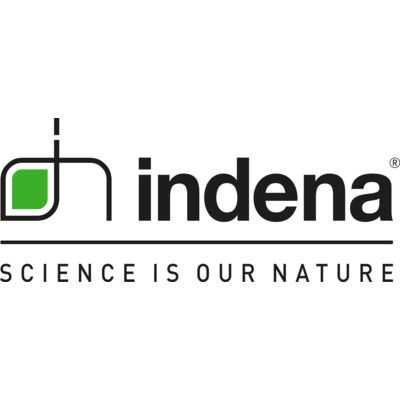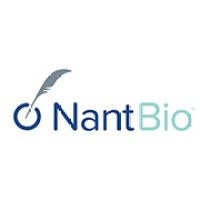June 4, 2015
By
Riley McDermid
and
Mark Terry
, BioSpace.com Breaking News Staff
The world’s richest doctor and his constellation of companies,
NantWorks
, have just raised $75 million for their startup, cancer immunotherapy subsidiary
NantCell
, a recent filing with the
U.S. Securities and Exchange Commission
shows.
Launched in January,
NantCell
immediately inked a deal with
Amgen
to develop and commercialize pancreatic cancer drug ganitumab, dubbed AMG 47, which had been in Phase III trials. That testing hit a brick wall in 2012, however, leaving
NantCell
with an uphill battle for the drug.
“It is our belief that the future of cancer care will involve combination therapy with low dose, metronomic use of multiple chemotherapeutic agents, but combined also with immuno-oncology molecules, or with engineered killer cells targeted at the proteomic pro the specific tumor, regardless of the anatomical type,” said
Soon-Shiong
.”
“The development of antibody molecules such as IGF-1R will require next generation sequencing at the proteomic level with a deep level of molecular interrogation to establish the appropriate combination with other drugs.”
In mid-May,
NantWorks
had a similar deal with promising cancer treatment Cynviloq, buying the subsidiary of
Sorrento Therapeutics, Inc.
for more than $1.3 billion.
That deal gave
Sorrento
$90 million in an upfront cash payment plus the potential for more than $600 million in regulatory and $600 million in sales milestone payments. The statement said
NantWorks
plans to use the drug in multiple cancer indications as part of its buyout of Igdrasol, Inc., a wholly-owned subsidiary of
Sorrento
.
The head of
NantWorks
is
Patrick Soon-Shiong
, dubbed “the world’s richest doctor” by
Forbes magazine
. He is also the former founder of
Abraxis
and
American Pharmaceutical Partners
, which he sold for a combined $9.1 billion. He also invented the drug Abraxane, for use against pancreatic cancer.
“We are extremely pleased with the recent Cynviloq Tribeca study results and excited that Dr. Patrick Soon-Shiong and his
NantPharma
team plan to expand Cynviloq into multiple cancer indications, as well as combine it with immunomodulatory antibodies and cell therapies from
Sorrento
‘s pipeline,” said
Henry Ji
, president and CEO.
Soon-Shiong certainly seems intent on building out his business portfolio. Earlier this week, Culver City, Calif.-based
NantBioscience, Inc.
, a division of
NantWorks
, Soon-Shiong’s umbrella company,
reported
to the
U.S. Securities and Exchange Commission (SEC)
that it had received another $100 million into funding from
NantWorks
.
So far,
NantBioScience
has
received
almost $200 million in funding since its founding in 2013. Further breakdown includes $300 million to
NantHealth
, $10 million to
NantOmics
and $80 million to
NantMobile
.
NantBioScience
works to develop molecularly-targeted drugs based on a genetic and molecular pro the patient’s tumor. Soon-Shiong’s umbrella company,
NantWorks
, is attempting to connect and integrate all the information regarding a patient and combine it with genetic information in a way that has never been done before.
Speaking last week at the
American Telemedicine Association
conference, Soon-Shiong referred to
NantHealth
as the “
Google Inc.
of genome mapping.” The company’s
Clinical Operation System
, which launched in February 2014 with $1 billion in funding, will allow users to browse and search an entire genome on a mobile device through the cloud. The goal, said Soon-Shiong, was to reach the “nirvana of coordinated delivery of care.”
In September 2014, the
University of Colorado
announced
a research collaboration and exclusive worldwide licensing agreement with
NantBioScience
to develop and commercialize cancer drugs that target the Ral protein. The Ral protein is a signaling molecule that is involved in the growth and metastasis of cancer.
NantBioScience
’s developmental program focuses on therapeutics to treat cancer by interfering with cancer communication messaging.
“
NantBioScience
is committed to the discovery and development of cancer fighting therapies that target the key drivers and root causes of tumor growth and spread,” said
Shahrooz Rabizadeh
, chief scientific officer of
NantBioScience
in a statement. “Targeting the Ral protein expands our ongoing efforts to silence a key pathway, the RAS pathway, that has been found to be altered and constitutively activated in one out of three cancers.”
On Jan. 13, 2014,
NantBioScience
announced
a strategic collaboration with
Celgene Corporation
. Under that deal,
Celgene
paid $75 million to
NantBioScience
as an upfront fee and equity investment.
NantBioScience
would build on its nanoparticle albumin-bound (nab) technology platform to develop a pipeline of nab-based molecules. Celgene will license two candidates to
NantBioScience
that had previously received Investigational New Drug (IND) approval.
The first candidate was NTB-011, a nab formulation that appears to disrupt vascular development in cancer cells. The second, 17-AAG, is an HSP90 inhibitor, which is being studied in hematological and solid tumors.
Soon-Shiong, not given to understatement, said of the collaboration, “We intend to make obsolete the standard method of clinical trial design of ‘trial and error’ and replace it with a level of quantitative predictability based on both the genomic and proteomic pro a priori. We also intend to make obsolete the common understanding that cancer treatments, developed under the age old dogma of ‘maximum tolerated dose,’ may work but only by wreaking terrible side effects, bringing patients to the brink of death.”
No details have been provided as to how the additional $100 million will be used.








